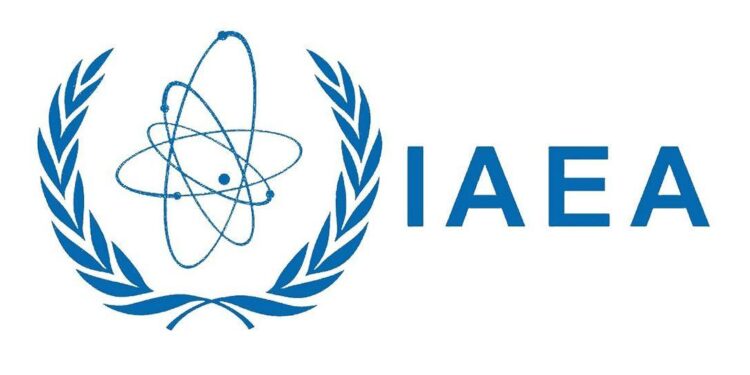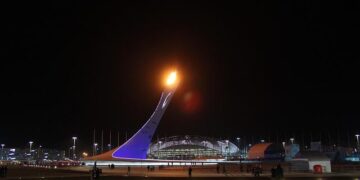An International Atomic Energy Agency (IAEA) team has successfully concluded its comprehensive review of the site and external events design for Ghana’s first nuclear power plant. This critical assessment, part of the agency’s ongoing support to member states developing nuclear energy infrastructure, underscores Ghana’s advancing efforts to establish safe and secure nuclear power generation. The IAEA’s evaluation aims to ensure that the planned facility meets stringent international safety standards, reinforcing confidence in the country’s nuclear energy ambitions.
IAEA Team Assesses Safety Measures at Ghana’s Inaugural Nuclear Facility
The International Atomic Energy Agency (IAEA) recently concluded a comprehensive evaluation of Ghana’s maiden nuclear power facility, focusing on critical site and external events design aspects. The mission’s experts thoroughly examined the plant’s preparedness against natural hazards such as earthquakes, floods, and extreme weather phenomena, ensuring robustness in line with international safety standards. The review also highlighted Ghana’s commitment to adopting cutting-edge safety protocols, which are essential for the sustainable operation of the nuclear power plant while minimizing environmental and public health risks.
Key findings from the assessment underscore the facility’s advanced design features and resilience measures, including:
- Seismic safety systems tailored to the local geological conditions
- Robust flood defense mechanisms integrated into the facility’s infrastructure
- Emergency preparedness plans developed in coordination with national authorities
| Safety Aspect | Design Evaluation | IAEA Recommendation |
|---|---|---|
| Seismic Resilience | High compliance with regional seismic codes | Implement ongoing site monitoring |
| Flood Protection | Effective barriers and drainage systems in place | Regular maintenance and stress testing |
| Emergency Response | Coordinated drills involving local agencies | Enhance public communication protocols |
Comprehensive Analysis Highlights Site Suitability and Risk Mitigation Strategies
The joint IAEA review team undertook a rigorous evaluation of potential sites for Ghana’s inaugural nuclear facility, ensuring the selection aligns with international safety benchmarks. This exhaustive assessment encompassed geological, hydrological, and meteorological factors that could influence the plant’s long-term stability and operational integrity. Particular attention was given to external events such as seismic activity, flooding risks, and extreme weather patterns. The team’s findings confirm that the proposed location exhibits favorable conditions, coupled with a robust natural buffer against identified hazards, thereby reinforcing confidence in the site’s overall viability.
Integral to the analysis were strategic risk mitigation measures tailored to Ghana’s unique environmental context. These include:
- Seismic design enhancements to withstand potential earthquake impacts
- Advanced flood protection systems incorporating elevated structures and drainage optimization
- Comprehensive monitoring networks for real-time environmental data collection
- Emergency preparedness frameworks customized for local infrastructure and community engagement
The recommendations put forth will not only safeguard the plant’s operations but also serve as a model blueprint for resilient nuclear infrastructure development in emerging markets.
| Risk Factor | Assessment Outcome | Mitigation Approach |
|---|---|---|
| Seismic Activity | Low to moderate | Site-specific seismic reinforcements |
| Flood Risk | Minimal impact zones | Elevated construction and flood barriers |
| Extreme Weather | Seasonal variability | Enhanced storm-resilient design |
Recommendations Focus on Enhancing Resilience Against External Natural Events
The IAEA team emphasized the necessity of bolstering safeguards to mitigate the impact of natural hazards such as earthquakes, floods, and extreme weather events on Ghana’s inaugural nuclear facility. Their findings suggest the integration of advanced structural reinforcements and real-time monitoring systems to ensure the plant’s robustness. These measures include enhancing foundation stability, adopting seismic isolation techniques, and installing state-of-the-art flood barriers tailored to the local environmental conditions.
Among the key suggestions presented were:
- Comprehensive risk assessments incorporating recent climate models and geological data.
- Deployment of early warning protocols aligned with national emergency frameworks.
- Improved redundancy in safety systems to maintain operational integrity under duress.
- Community engagement strategies to foster preparedness around the plant’s vicinity.
These recommendations aim to establish a resilient infrastructure that not only complies with international standards but also sustains continuous safety for both the facility and surrounding communities.
| Recommendation | Purpose | Priority Level |
|---|---|---|
| Seismic Isolation Technology | Reduce earthquake impact on structures | High |
| Flood Defense Systems | Prevent water ingress during heavy rainfall | Medium |
| Real-Time Monitoring | Track environmental and structural changes | High |
| Emergency Preparedness Training | Enhance community and staff readiness | Medium |
Final Thoughts
As Ghana moves closer to realizing its ambition of launching its first nuclear power plant, the completion of the IAEA’s site and external events design review marks a critical milestone in ensuring the project’s safety and adherence to international standards. The findings and recommendations set forth by the IAEA team will play a pivotal role in guiding Ghana’s nuclear energy program towards a secure and sustainable future. Stakeholders and observers alike will be watching closely as the country advances its efforts to diversify its energy mix and meet growing electricity demand with this landmark initiative.














